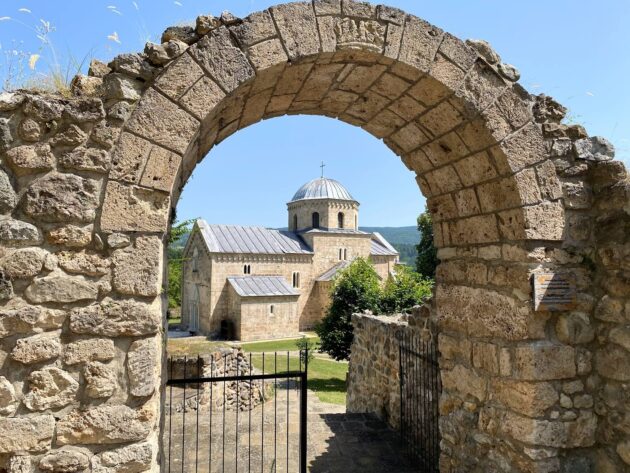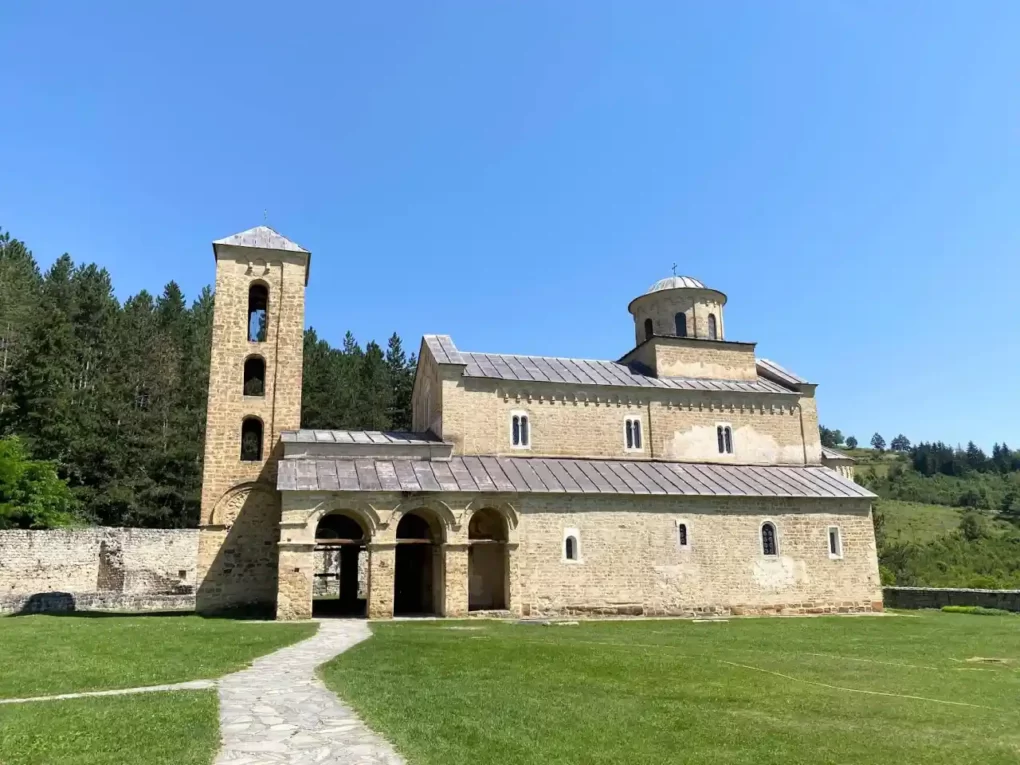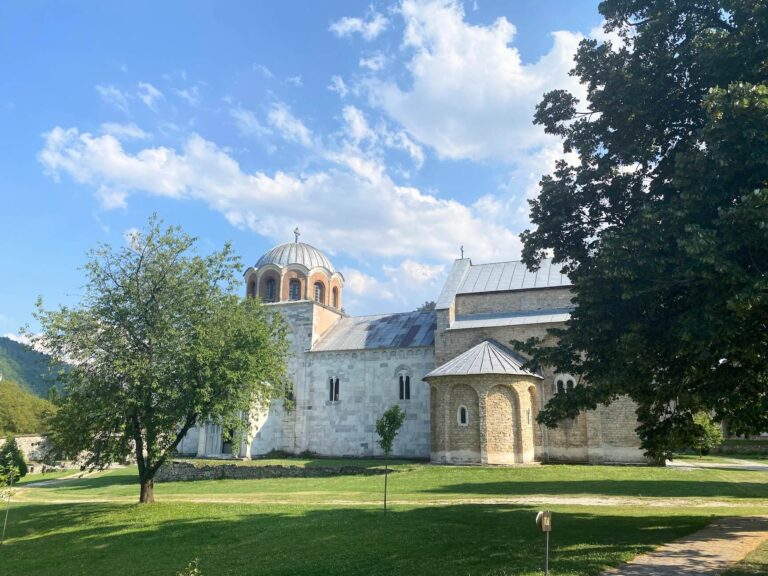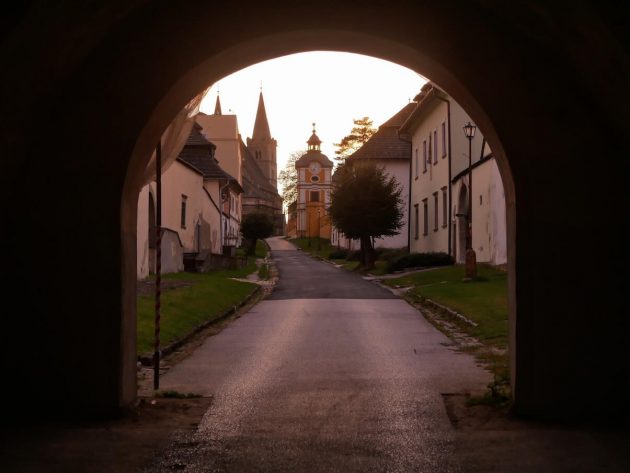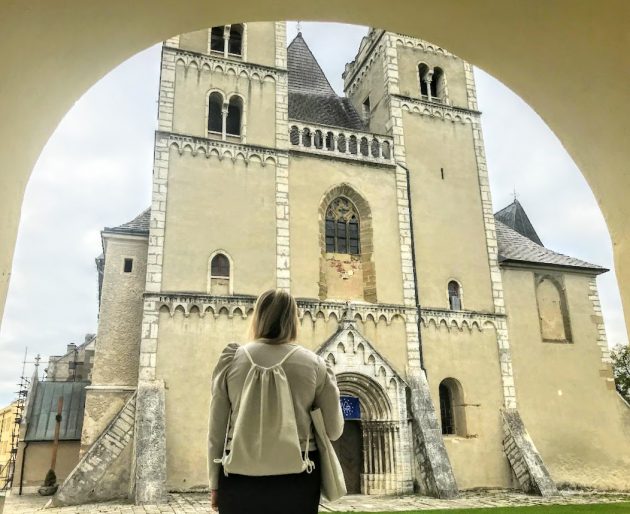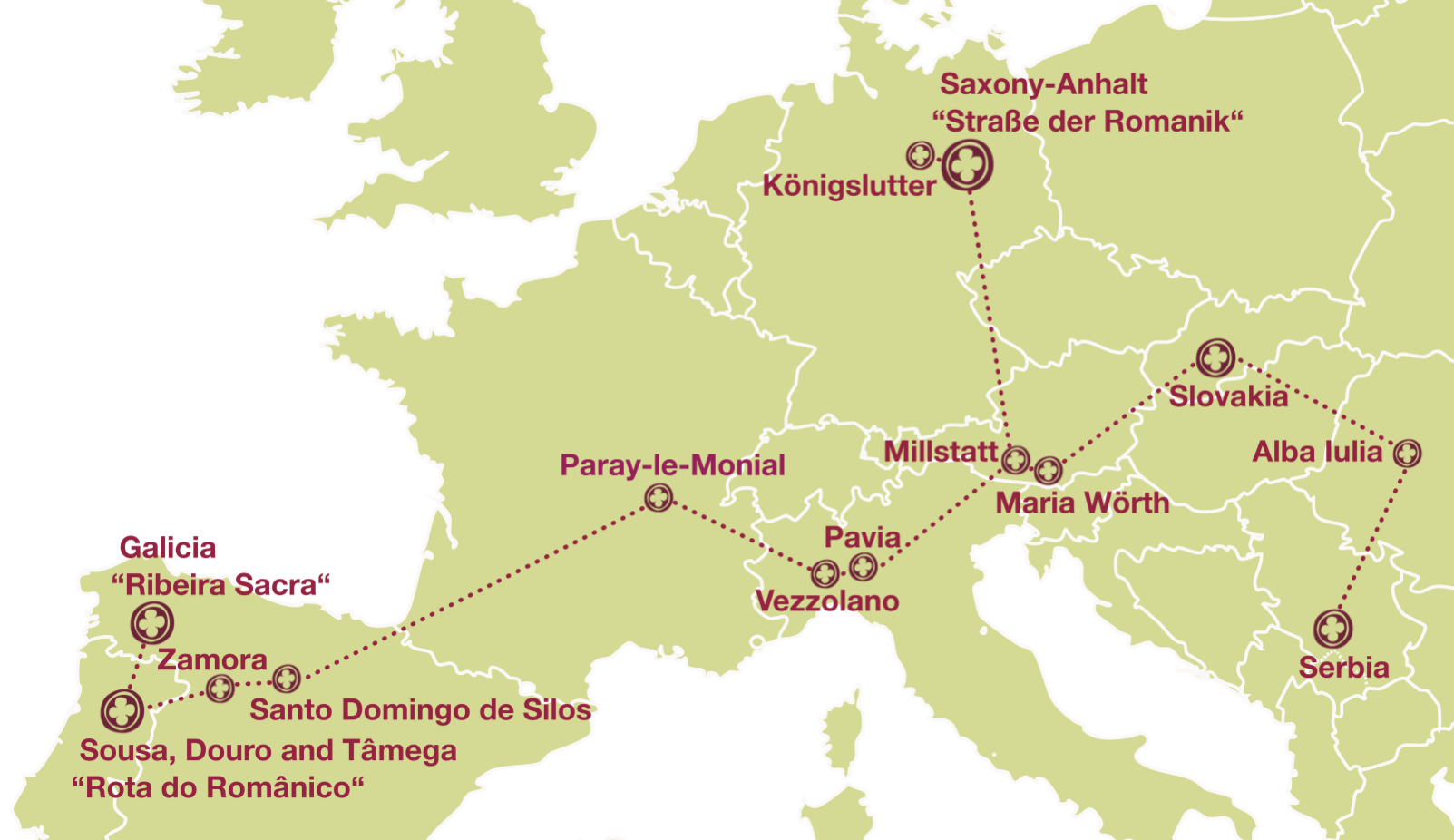Welcome to the TRANSROMANICA Travel Blog!
Here, we would like to share with you interesting stories, travel reports and links to articles and publications about journeys along our European Cultural Route!
You can find here the directions to blog posts related to our TRANSROMANICA Bloggers Trips, videos, guest articles, impressions from site visits and much more.
You can even discover articles in other languages.
Enjoy your virtual journey!
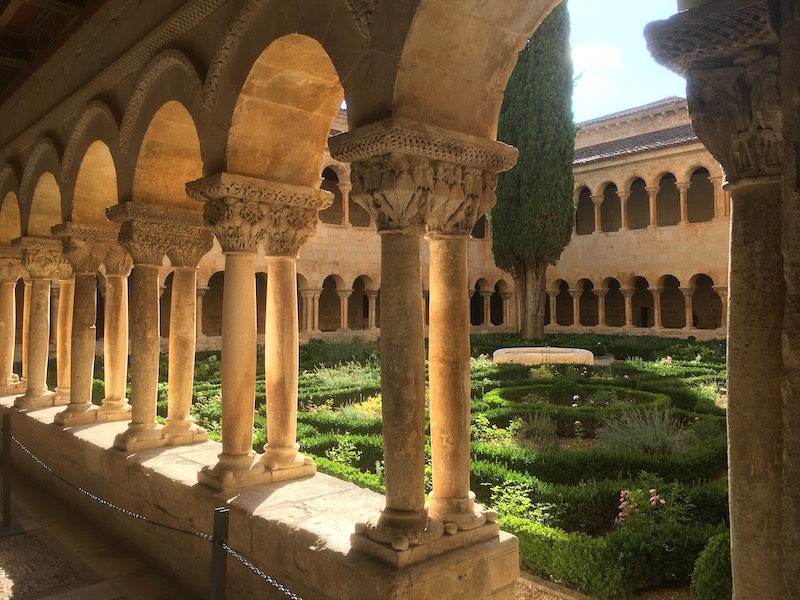
Dreamed, now travel!
This campaign was invented by our friend Tea Gudek Snajdar, owner of the Culture Tourist Blog, as a follow up of her “Dream, the travel” campaign you may remember from Slovakia. Its aim is to focus on promoting cultural tourism in destinations through various content, including blog posts, videos, colouring postcards and social media updates. Its goals are helping the destination reach travellers interested in art and culture, creating high-quality content about the destinations, focusing on cultural tourism in the promotion and content creation. Sharing this content about the destination during a more extended period makes readers familiar with it and increases the chances of a visit. It invites you to think about a destination you might not have thought about at first hand and to give you a hint what you´re going to miss if you don´t see it for yourself.
According to her: “As explorers and travellers, we are always looking for hidden gems, destinations that haven’t been discovered yet by the large amount of tourists. It’s hard to find those special places in today’s globalised world. However, last week I spent a few days exploring the medieval monasteries in Serbia. And was thrilled to find some of those authentic places there.”
Tea discovered our TRANSROMANICA sites in Serbia and show you what makes Serbia so special and definitely worth a visit as well as take you on a journey to show you off the beaten track a region without overtourism,
Exploring the TRANSROMANICA Sites in Serbia
In July 2023, Tea travelled in cooperation with TRANSROMANICA and its member NTOS (National Tourism Organization of Serbia) to Serbia and went on a journey of exploring the TRANSROMANICA sites there.
In her first article she writes about Serbia´s beauiful monastic settings of TRANSROMANICA. With more than 200 medieval monasteries, Serbia is a fantastic place to visit as Serbian medieval monasteries were centres of education and places where art and culture flourished. By exploring that region without overtourism she gives you an impression about her experiences, what she liked most and what she didn´t expect from Serbia.
Sopoćani Monastery in Serbia
In her second article she writes about Sopoćani Monastery as a beautiful place located in the green landscape of Southern Serbia. The 13th-century monastery is famous for its extraordinary frescoes. Although it had a turbulent history, it found its place on the UNESCO World Heritage list for its artistic and cultural importance. Like many other Serbian medieval monasteries built during the same time, both Western and Byzantine influences are visible in its design.
While reading her article you get an impression how magical this region still is and that it hasn´t lost its medieval character since the middle ages. What she liked most and what makes this region the perfect fit if you´re looking for a little medieval time out and hidden gems, she shares in her article.
Studenica Monastery in Serbia
In her third article Tea writes about Studenica Monastery as the largest and one of the most important monasteries in Serbia. With its fantastic architecture and wonderful location in the middle of an intact nature, it looks like a place out of this world with its main church dedicated to the Mother of God, dominating the whole site. It was built in ten years only which is a huge task during the middle ages. It was built with a combination of white and grey marble blocks giving it a sophisticated textured quality. Inside the Church you will be overwhelmed by a lot of fantastic preserved frescoes with byzanthine blue colour.
If you’re interested in medieval architecture and monastic life, Studenica Monastery in Serbia is a place to visit.
Dream, then travel!
This campaign was invented by our friend Tea Gudek Snajdar who is the owner of the Culture Tourist Blog. Its aim is to inspire you when looking for a new destination during the COVID-19 crisis and where to travel next once its over. It invites you to think about a destination you might not have thought about at first hand and to give you a hint what you´re going to miss if you don´t see it for yourself.
Tea discovered our TRANSROMANICA sites in Slovakia and will take you on a journey to show you off the beaten track a region without overtourism, what makes Slovakia so special and what makes it definitely worth a visit once its safe to travel again!
Exploring the TRANSROMANICA Sites in Slovakia
At the end of September Tea travelled in cooperation with TRANSROMANICA to Slovakia for the first time in her life and went on a journey of exploring the TRANSROMANICA sites in Slovakia. In her first article she writes about the fantastic medieval settings of TRANSROMANICA in Slovakia and what makes them so magical to her. By exploring that region without overtourism she gives you an impression about her experiences, what she liked most and what she didn´t expect from Slovakia.
A Guide of Spišská Kapitula and Spiš Castle in Slovakia
In her second article she writes about the breathtaking area of Spišská Kapitula and Spišské Podhradie. While she was exploring this region she visited beautiful Spiš Castle, which is one of the best preserved medieval fortifications in Europe, and St. Martin´s Cathedral with its old library which ist located directly above the chapel. While reading her article you get an impression how magical this region still is and that it hasn´t lost its medieval character since the middle ages. What she liked most and what makes this region the perfect fit if you´re looking for a little medieval time out, she shares in her article.
A TRANSROMANICA Week in Slovakia
IMAGINE! A FASCINATING JOURNEY OF THE MIND
While real travels remain to be up in the air, we would like to invite you on a journey of mind along TRANSROMANICA and all across Europe.
We are starting in Serbia, and will take you all the way to Portugal and Spain.
Let’s dream a bit for a couple of minutes every day and delve into a fascinating journey through space and time.
Serbia welcomes us with stunning views, passionate hospitality, outstanding cultural heritage and tenderly maintained traditions.
In Alba Iulia you can actually travel in time and discover the rich cultural heritage of an extraordinary place of great importance for Romanian and European history.
Spišská Kapitula is one of three TRANSROMANICA sites in Slovakia. Did you know that this ecclesiastic town is also referred to as the „Slovak Vatikan“? See for yourself what a discovery tour of the UNESCO World Heritage Site could look like.
For everyone who is looking for stunningly beautiful landscapes, activity and gusto in combination with a cultural discovery tour we highly recommend a journey to Carinthia.
Places of art, movers and shakers of culture, monastic sites and cuisine – Don’t you think this calls for a discovery tour of Saxony-Anhalt and its “Straße der Romanik“?
Königslutter is a place that will surprise you in so many ways. It is situated at the edge of one of the largest and most beautiful beechwood forests in Northern Germany. It is home to one of Germany’s most important cultural monuments of the Romanesque. And its history is witnessed by one of the oldest trees in the country.
Did you know that Vezzolano Abbey is the heart of the Romanesque Churches Circuit in the Lower Monferrato Region in Piedmont? The network connects its unique masterpiece St. Mary of Vezzolano with a further 19 Romanesque heritage sites nestled in picturesque landscapes.
When in Pavia, go for a stroll through the city’s squares, avenues and the famous covered bridge, and you’ll be able to read its history!
In the south of Burgundy, in the land of Charolais-Brionnais we can discover a real treasure. The great density of Romanesque or partly Romanesque churches and chapels accounted for the region to be referred to as the „Romanesque garden“.
In Santo Domingo de Silos you can feel that the history of the town is strongly connected with that of the monastery. Unsurprisingly, the Romanesque gem is the place to visit. Today, it is still managed by Benedictine monks who are well-known for their celebration of Gregorian masses.
If you can’t get enough of medieval heritage, Zamora is the place to visit. With more than 20 well-preserved Romanesque buildings, the small town holds a fascinating legacy that can be witnessed and experienced with all senses.
Sit back and join us on this inspiring journey for all senses! The “Rota do Românico” in the North of Portugal invites you to discover unique cultural and historical heritage forged in a picturesque landscape of green valleys and vineyards.
Our virtual journey comes to an end in a region that is considered the home of the greatest concentration of rural Romanesque architecture in Europe – the Ribeira Sacra. Here, an outstanding legacy meets a great variety of outdoor activity and an unforgettable culinary experience.
We embarked on an imaginary journey across Europe. The fascinating heritage of the Romanesque era was the golden thread that led us all the way from Serbia in the east to the western edge of the continent in Spanish Galicia. Don’t you think it’s amazing how this legacy connects European regions across large distances that are home to a variety of cultures and traditions? By exploring the similarities and specific regional characteristics of our European cultural heritage, we can witness how the mobility of medieval societies contributed to the spread of knowledge and ideas and thus to the development of a common language of art and architecture – united in diversity.



